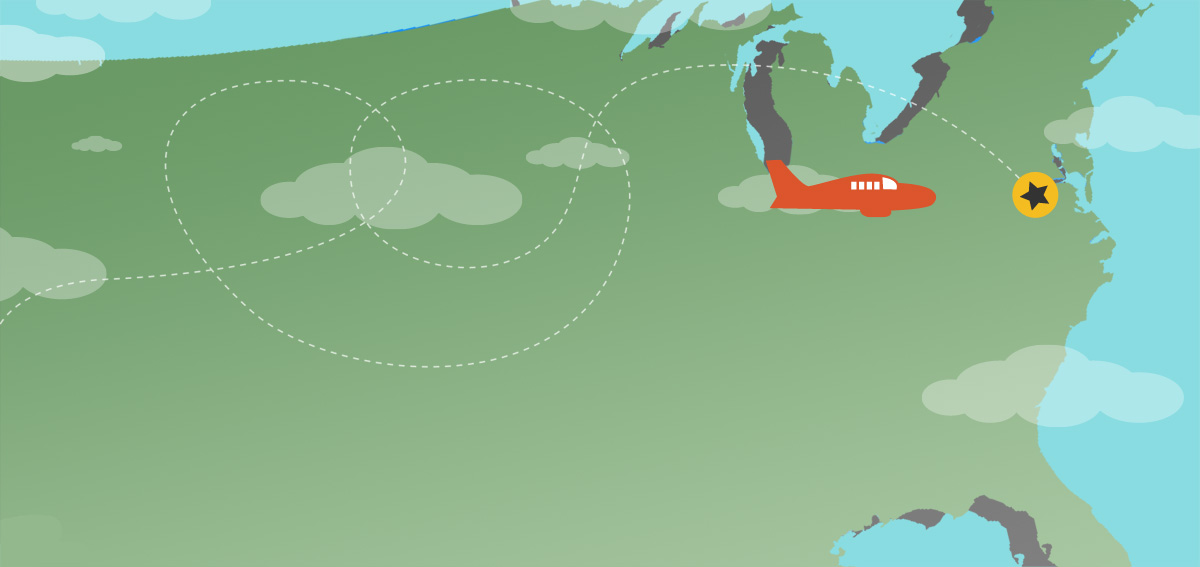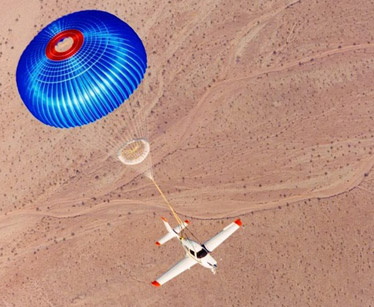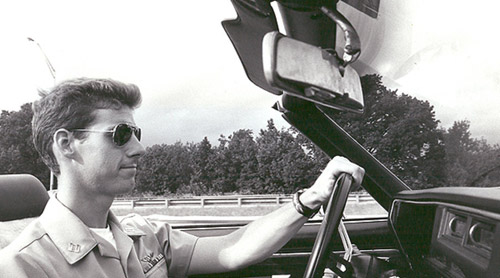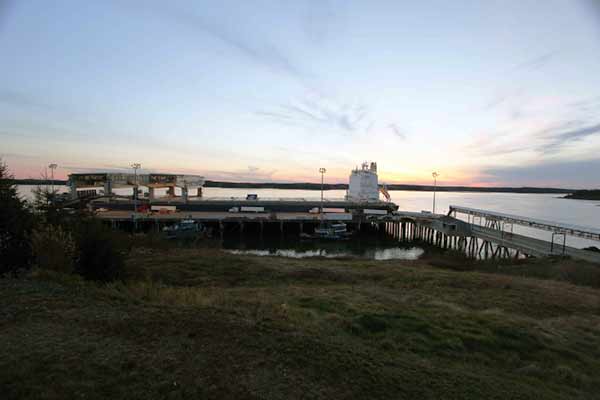Alexis de Toqueville. Lewis & Clark. John Steinbeck. The American concept of the ‘road trip’ extends from social critics to geographic pioneers to literary giants. It’s not just for RV-owning families and college students.
And in that tradition, we’re partnering with The Atlantic and the software company Esri, on a trip through the American economy – by plane. Flying into regional airports in small towns across the country reveals what we all know: The American economy isn't all multinational corporations and monetary policy and Wall Street. It's what's happening with people and small businesses in towns and cities all over this country.
Redlands, California
On the next stop in our American Futures project, Atlantic correspondent James Fallows and Marketplace drive to the sunny Southern Californian town of Redlands.
So far, the duo has travelled to places like Sioux Falls, S.D. -- where the city’s agri-business sector makes it a central force in the global economy – to Eastport, Maine – the easternmost city in the United States driven by its maritime past, but positioning itself for the future.
Redlands is home to over 68,000 residents today and while the orange harvesting and packing industry used to drive the economy earlier in the century, this town has learned – and is continuing to discover – how to use the past to market its present.
Eastport, Maine
Eastport, Maine, population 1,331, is the easternmost city in the United States.
As part of this American Futures project, Atlantic correspondent James Fallows and Marketplace have now visited Sioux Falls, S.D.; Burlington, Vt.; Holland, Mich.; and now Eastport.
Eastport is by far the smallest city of those four – and may in fact be the smallest city we visit on our cross-country tour of the economic resilience and reinvention in small-town America.
And in fact, Eastport used to be larger. It’s population crested at 5,300 at the turn of the last century.
The city’s history and culture are almost entirely maritime-focused. In fact, the geography of the Maine coast has given Eastport the deepest natural harbor on the U.S. east coast, allowing it to handle enormous ships outsized for a town of its size.
Finally, the city boasts the only remaining stone-ground mustard factory in the United States – Raye’s Mustard.
Sioux Falls, South Dakota
Sioux Falls, S.D., is both smack dab in the middle of the U.S. map – but the city is already part of our lives: From how we eat, to how we pay our bills, to how we grow our food.
The city boasts 160,000 residents and one of the lowest unemployment rates in the country – 3 percent. One reason it has so many jobs? The city developed several different employment bases, including agriculture, financial and health care.
The city’s agri-business sector developed in large part because of a huge, six-story pork processing plant in the middle of town. The plant, known as the John Morrell and Co. factory, employs 3,300 workers – but has been sold to Smithfield Foods, a company that is the target of a takeover bid by a Chinese food company, Shuanghui. The Morrell plant isn’t the only nationally-known food company in Sioux Falls.
“The way it started was with a neighbor of ours that owned hotels. And I was mowing the grass one day and he stopped his car and said, ‘Hey, how are you doing?’ and, I said, ‘Great, hey, do you know anyone at Marriott or Hampton Inn that I can connect with?,’” says Kurt Loudenback, the CEO and owner of Grand Prairie Foods. His company sells pre-made breakfast sandwiches and food products to schools and hotels across the country. “And he sent me their email addresses and I reached out to them and told them a little bit about what we have and one thing led to another and we ended up doing business with Hampton.”
“We found that once you have a customer like that, the credibility is instant. We didn't go looking for any of these,” Loudenback says. “They were looking for an egg product and I just said, ‘Hey, I think I can do those.’ And we did.”
Grand Prairie Foods employs 85 people, including immigrants and refugees from around the world. The low unemployment rate and high quality-of-life means the city serves as a magnet for immigrant families and communities. In fact, the Sioux Falls school district reports that its student population speaks more than 60 different languages at home.
So – from the sandwiches you eat at a hotel to the way you pay your bills -- maybe Sioux Falls IS the center of our economic universe. Or, at least, maybe a bit more of the center than you thought.
Over the course of the next few days, we’ll be tracking how Sioux Falls impacts our credit card bills and the food we eat.
***
There are more than 4,000 small airports across the United States, airports that you don't walk through on your way to Atlanta (the busiest U.S. airport) or Chicago O’Hare (No. 2 in U.S. airports).
For instance, Morgantown Municipal Airport in Morgantown, W.V., has two runways, and services just one commercial airline. The airports boast of free parking, free coffee and free Wi-Fi. (Free parking at the airport – it still exists in many places!) This is one of hundreds of examples in every state of the nation.
Traveling to cities like Morgantown can give us a unique glimpse into the American economy from the ground up, examining the financial contours of small towns situated hundreds of miles from interstate freeways and major U.S. cities.
The “American Futures” project is an ongoing special series from APM’s Marketplace, The Atlantic, and mapping software company ESRI that will take listeners and viewers to these small towns to talk to people who are living the new American economy in places too-often-forgotten in today’s world.
The Atlantic’s national correspondent James Fallows has traveled around the world, and across the country in his small plane that he pilots himself. And on this new project he and his wife, linguist Deb Fallows, will fly between Sioux Falls, S.D.; Holland, Mich; Fairfield, Iowa; Bozeman, Montana; Bartlesville, Okla., and countless more towns. Marketplace host Kai Ryssdal will tag along for the ride on some of these visits: All to examine how the underpinnings of the American economy have been knocked away for many Americans outside of the urban centers.
Some cities we're considering for our travels:
- Astoria, Ore. — which was the end of Lewis and Clark’s journey, at the point the mighty Columbia River meets the sea — once had an economy based on salmon and lumbering. Before that, on fur: it was named for John Jacob Astor’s Pacific Fur Company. Now it is going through economic reinvention, starting with tourism.
- Greenwood, Miss., is a “company town,” located in an otherwise-impoverished area of the Mississippi Delta; it was a center of strife in the Civil Rights era; yet now it is the home of Viking Ranges, a very high-end product in demand around the world.
Where should we visit?
After we announced the “American Futures” project, 600 people wrote in to suggest towns and cities we should visit – and why. In the map, you’ll see that while Fallows traveled from Washington, D.C., to Holland, Mich., for the first leg of the journey, the suggestions for where to go next are varied and (slightly) overwhelming. As Fallows says on his blog, “I know the comparison is grandiose, but it feels like an unexpected and ad hoc modern counterpart to the detailed local chronicles of 1930s America during the Federal Writers Project.”















